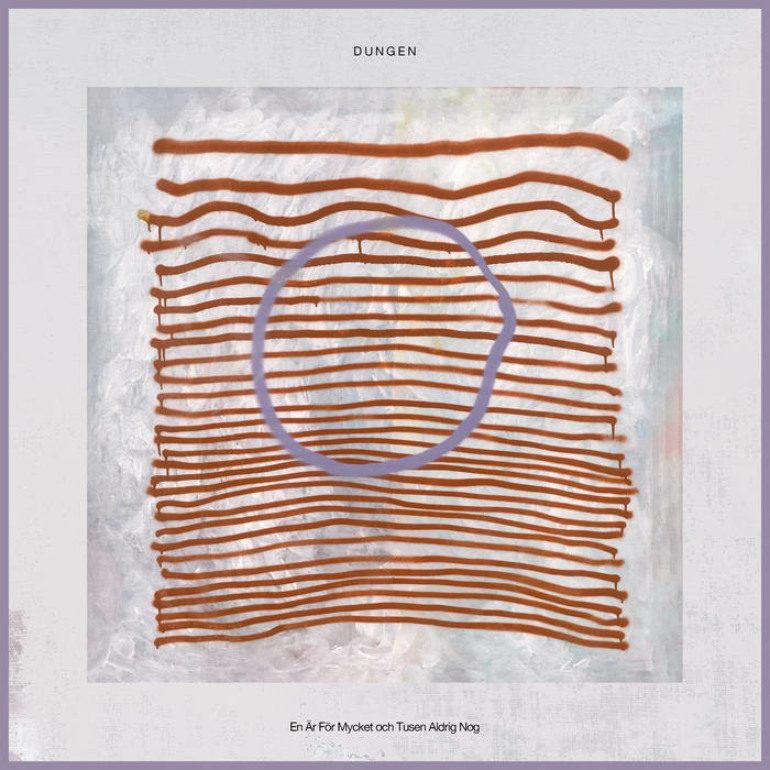

Swedish psychedelic rock with international appeal
At first glance, those unfamiliar with the music of Dungen may expect something heavy and aggressive; perhaps distorted guitars, drop-tuned bass, blast beats and plenty of screaming. En Är För Mycket och Tusen Aldrig Nog, after all, appears to be a menacing title to those unfamiliar with the Swedish language. Perhaps the very same non-Swedish listeners, unfamiliar with Dungen’s forward-thinking sound, are in for the biggest treat of all with the band’s newest album.
En Är För Mycket och Tusen Aldrig Nog (“One is Too Much and a Thousand is Never Enough”) is anything but menacing; rather, it’s akin to an art gallery where nine paintings hang – their bold, abstract colors striking against white walls. You recognize some of the colors and figures, while others seem to be from a different dimension, unlike anything you’ve seen before. With each painting distinct from the last, the only unifying factor among the works in this cosmic gallery is the artist whose name adorns them.
Dungen (“The Grove”), the brainchild of singer, composer and multi-instrumentalist Gustav Ejstes is an undeniable behemoth of psychedelic rock. Currently signed to the New York-based label Mexican Summer, Dungen has released eleven albums since 2001 including the internationally acclaimed Ta Det Lugnt (2004), which spurred on two U.S. tours and droves of new fans worldwide. With a rich legacy spanning two decades now, En Är För Mycket och Tusen Aldrig Nog marks the band’s first venture into the sonic unknown since 2016.
The first track, “Skövde”, immediately dispels any false impressions of aggressive rock music among new listeners. Instead, the album opens with the palatable, steady groove of a drum machine accompanied by acoustic guitar, piano, electric guitar and Ejstes’s smooth vocals. The chorus traverses through several key changes that make the song more than just a pleasant, acoustic-pop track and quickly ushers in Dungen’s trademark psychedelic color.
Complex harmonies, tape-reminiscent mixes and mountains of modulation, delay and fuzz permeate most of the album with a vintage psychedelic-rock feel, not unlike Tame Impala’s Lonerisms. Some tracks, such as “Höstens Färger”, take on a more clean, dry warmth shared by bands like Pinback and Khruangbin. Additionally, it’s hard to miss the distinctive Swedish color brought about by some of the instruments – perhaps most evident at the end of “Om Natten”, where an ancient-sounding flute brings the album to a close.
En Är För Mycket och Tusen Aldrig Nog strikes a surprising balance between commercial appeal and artistic innovation. Like the paintings in the hypothetical art gallery, the songs stand on their own as individual works of art. “Nattens Sista Strimma Ljus” and “Skövde” combine pop music form with a perfect amount of strange, kaleidoscopic tones and ear-splitting distortion. “Möbler” crosses into jazz-fusion territory with plenty of dissonances, a B3 organ, shifting key centers, and extended solo sections. The soft shuffle of “Höstens Färger” is charming and thoughtful, channeling a vintage sound shared by The Beatles, Eagles, or The Carpenters. “Var Har Du Varit?” takes on a surprising 90s jungle beat with frantic drums and tasteful guitar playing; a stark contrast from the rest of the album. Perhaps “Klockan Slår Den Är Mycket Nu” is the crux of the album’s experimental madness with turntable scratches, slowed vocal samples, an impromptu transition into another instrumental and a speech that segues perfectly into the succeeding title track. Finally, “Om Natten” concludes the album with a powerful, cinematic ballad.
All in all, En Är För Mycket och Tusen Aldrig Nog is a welcome and fresh addition to Dungen’s discography sure to please old fans – and to enrapture plenty of new listeners as well.
